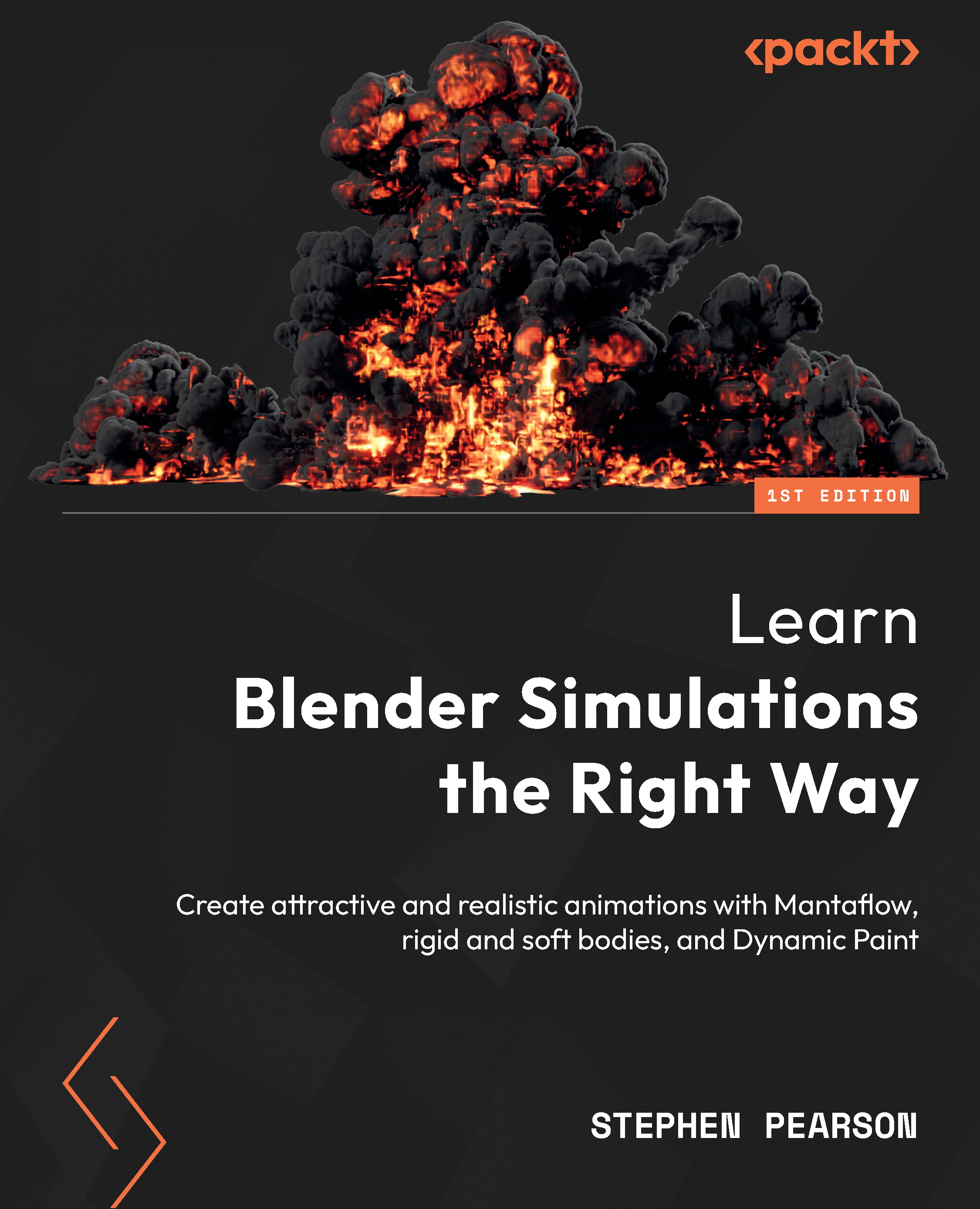Creating materials
We have covered a lot in this chapter so far. We’ve learned how to create realistic settings for the domain, added flow objects, and created Foam particles! Before we create materials, we need to decide which render engine to use. For this scene, I recommend sticking with Cycles, and the reason for this is Eevee is limiting when it comes to transparent materials and particles and when there is a lot of geometry in the scene.
For most scenes, Eevee will render much faster than Cycles because it’s a real-time engine. For this scene, though, I found that Cycles renders about 80% faster than Eevee. This is because there are so many particles, and Eevee has a hard time computing all of them. If you were to turn off the particles, then Eevee would be faster. Since we are rendering the particles, I recommend switching to Cycles for rendering. Plus, Cycles will give you much better reflections and shadows.
With that out of the way, let’s jump into...

































































